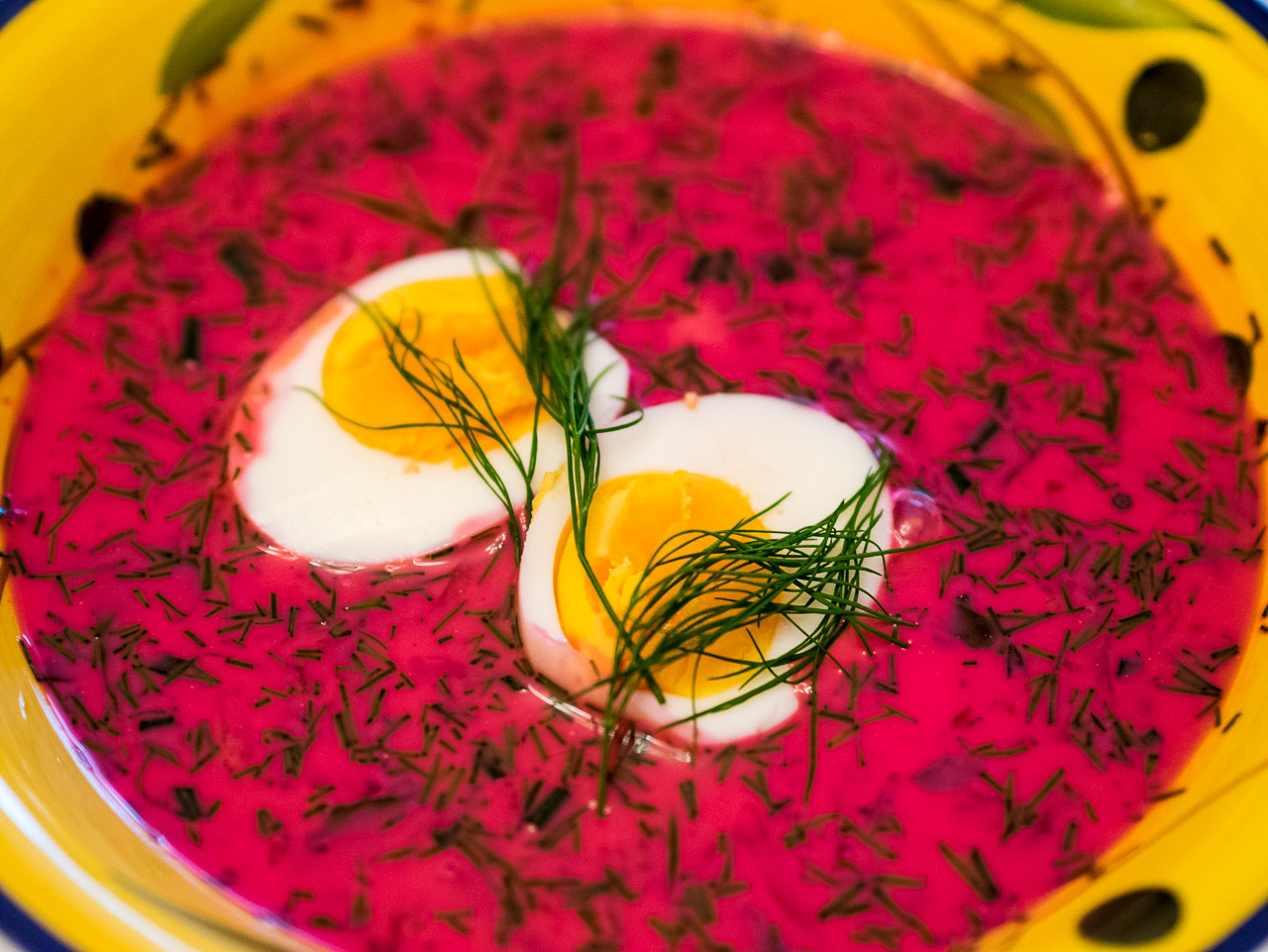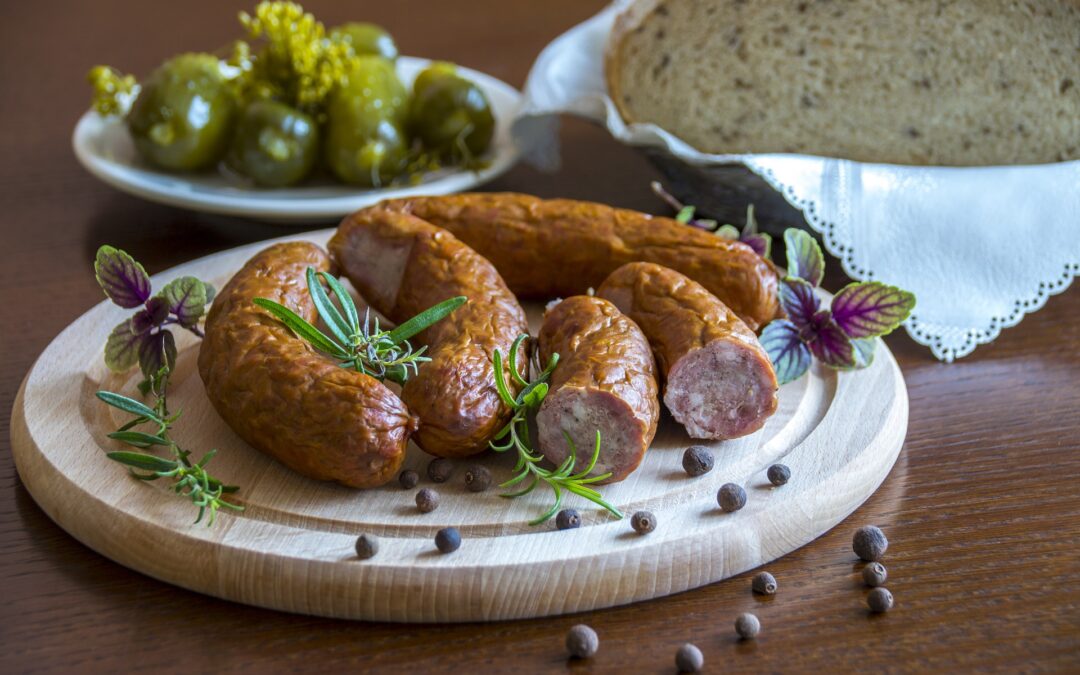By Magdalena Tomaszewska-Bolałek
In the pantheon of global cuisines, Poland usually does not feature very highly. Where people are aware of Polish cuisine, it is usually associated with certain stereotypes. Yet there is much more to it than the famous vodka and pierogi. It’s time to dispel some of the myths and explore the lesser-known aspects of Poland’s varied, interesting and often surprising culinary culture.
There is no single “Polish cuisine”
From an ethnological point of view, there is no single Polish cuisine across space and time. Country dishes are completely different from those that would be found on a 17th-century Polish Sarmatian nobleman’s table, which were fragrant with imported spices, as well as sweet and sour mixes much like modern-day Indonesian cuisine. The food served during the communist era, mostly inspired by over-the-counter product availability, is another story altogether.
Moreover, Polish dishes have many regional faces. The northern Kashubian region on the Baltic coast is famous for its fish, especially herring as well as scrambled eggs with eel. Potatoes constitute the basis of the diet in the central plains of Greater Poland, where they are largely grown.
The mountainous southern Podhale region boasts its EU-certified regional sheep cheeses and lamb. In the southeastern tip of Poland, the Lemko minority still cultivate their cuisine with preserved tomatoes, dumplings, and cottage cheese balls with herbs.
Polish food is seasonal
Polish food comes and goes with the seasons. Spring is associated with Easter food: it is a time of cold meats, eggs served in many ways, and cakes like babka (a tall Bundt cake) and mazurek (buttery shortcrust pastry with jam or caramel cream). Since the 17th century, Easter tables have been decorated with garden cress accompanied by lamb figure. This herb is also eaten as sprouts.
Summer is the time to try chłodnik – a bright pink cold soup made from beetroots and sour milk – followed by a parade of fresh berries, from strawberries through gooseberries, raspberries, cherries and bilberries.

Chłodnik – cold beetroot soup (Klischka/Wikimedia Commons, under CC BY-SA 4.0)
Autumn brings apples, a variety of aromatic mushrooms and game. A feast featuring roasted goose is the best way to celebrate November – when the fatty bird tastes its best. The season is also associated with Saint Martin of Tours, whose day is celebrated on 11 November, and who has this bird as his emblem. Christmas is about traditional gingerbreads, poppy seed cake, as well as soused herring and carp.
Ruthenian dumplings, not Russian
Poland’s flagship dish of pierogi is a kind of dumpling that originated in China and spread around Eurasia through Silk Road trade. Poland even has a patron for its variety of the dish, Saint Hyacinth (1183–1257), who brought the first recipe for pierogi from Kyiv. According to legend, he cooked the dumplings and saved people in Kraków from famine.
The most popular type is pierogi ruskie – with a filling of quark cheese mixed with boiled potatoes, often served with lardons or fried onion. This recipe is not as old as Saint Hyacinth’s, because potatoes were not a popular staple food in Poland until the 19th century.
The @BBC looks at Poland's national comfort food, pierogi https://t.co/1j2EyvzFYa
— Notes from Poland 🇵🇱 (@notesfrompoland) December 19, 2018
Their name is often translated into English as “Russian pierogi”, and many Poles also assume that they relate to Russia. In fact, “ruskie” refers to Red Ruthenia (Ruś Czerwona in Polish), an area that is now in western Ukraine and Poland. Their name is, therefore, properly translated as “Ruthenian pierogi”.
The famous Polish sausage
Internationally, and certainly in America, “Polish sausage” has come to be associated with a single type of U-shaped sausage. Yet, there is much more to “kiełbasa” in Poland.
The Polish tradition of making sausage dates back to Middle Ages, with some historical products, like piaszczańska sausage with herbs and garlic, produced continuously since that time.
Since then, however, charcuteries have developed various cold meats including smoked hams, bacon, as well as blood sausages made of offal, blood, and groats. For Easter, an unsmoked “white” variety of sausage is often eaten smothered in fried onions or soaked in sour-rye soup.
As more Poles switch to vegetarianism, a leading meat production company has even started selling a meat-free variety of its thin dry “kabanosy” made from a plant blend.
You know Poland's changing when one of the country's biggest meat companies launches vegan kabanos pic.twitter.com/VffehfhQlt
— Daniel Tilles (@danieltilles1) October 1, 2020
Not just a cuisine for carnivores
Polish cuisine is regarded as meat-packed, and to some extent that is true. Poles still roast meat with flair: pork ribs with honey, game with wild mushrooms, or duck with apples.
However, up till the beginning of the 20th century, the availability of meat was linked to social standing and considered a luxury reserved for special occasions in many spheres. As a result, much traditional Polish food is suitable for vegetarians, of whom there are growing numbers in Poland.
Pierogi come stuffed with fruit, cottage cheese, potatoes, various groats, mushrooms and cabbage. Chefs and culinary bloggers are also remaking traditional recipes into new vegetarian or even vegan versions.
For more on the growth of veganism in Poland – and also the backlash it has faced – see our previous article https://t.co/MtLPXf3mhN
— Notes from Poland 🇵🇱 (@notesfrompoland) December 1, 2020
Marta Dymek, author of the well-known vegan blog Jadłonomia, invented a sauerkraut hunter’s stew (bigos) where oyster mushrooms replace meat, while self-taught vegan chef Maria Przybyszewska is popularising pâtés and soups free of animal produce.
Getting in a pickle
While the bleak landscape often associated with Polish winters holds little promise for salad lovers, the ancient Slavs found a workaround to stock up on legumes and vegetables. It is likely that even in the 7th century they already knew how to pickle.
Fermented cucumbers, cabbage, and beetroots were so rudimentary that the famous poet Mikołaj Rej (1505-1569) wrote about preserved beetroot with horseradish and lightly salted cucumbers in his works. Fermented food is thought to improve digestion, boost immunity, and help to maintain a healthy weight.
A map of gourmet cheeses
According to current archaeological research, the world’s oldest ceramic dish with holes, which was probably used to make quark, comes from 6000 BC from the Kuyavia region in what is now central Poland. With a sprinkle of chives or sliced radish, it is still a breakfast staple across the country.
Yet Poland also has several artisanal cheeses. Podhale is famous for its oscypek and bryndza sheep’s milk cheeses. Both products have a signature Protected Designation of Origin. Local cheeseboards also boast Koryciński cheese from the eastern Podlasie region and aromatic Bursztyn from around the city of Lublin.

Grilled oscypek, a sheep’s milk cheese from Poland’s Tatra Mountains (petrOlly/Flickr, under CC BY-NC-ND 2.0)
The Kashubia region produces some of the best craft goat cheeses in Poland, such as Kozia Rura – a soft, creamy, awarded-winning cheese from Gospodarstwo Kaszubska Koza. They also have products with flowers and spices such as fenugreek.
Warming to Polish wine
Poland is famous for its vodka, as well as, to a lesser extent, its mead and beer industries. However, Polish wine is also taking root.
Originally linked with Christian religious rites, the first barrels were produced by monks. The drink later became fashionable at royal castles and noble courts, and more widely accessible through imports in the 16th century.
However, a real wine revolution began in the 1980s, with the return of the tipple that was previously banished from socialist tables as elitist. Today, with around 300 commercial wine producers in the country, vineyards are reappearing in the landscape of collective farms and ecotourism is on the rise.
Polish wines are now winning international awards and gaining popularity abroad, and producers hope that warming weather could benefit local wine production in coming decades.
Not appealing to the eye?
The communist era produced a shortage of food in Poland. It was a time marked by long queues outside shops, vouchers for food staples, and the decay of culinary culture. Exquisite dishes served at banquets became a thing of the past. Simple food, like cabbage stew and pork cutlets with potatoes, was served at worker canteens and homes.
After 1989, when Poland threw off the yoke of communism, new products – from exotic ingredients to healthy superfoods – began appearing in stores. Chefs began to experiment with plating, using pottery made by young artists including Maciej Nowicki and Aleksander Baron, who cooperates with craftsmen such as Moja Siostra Alchemicus as well as Kooe. New Polish Cuisine is very Instagrammable.
Christmas would not be the same without carp
Many, if not most, Poles tuck into carp for Christmas, often having kept the fish in buckets or bathtubs before the holiday meal. This tradition is often seen as a modern one, dating back only to the communist era, when post-war shortages saw the government encourage production and consumption of the carp.
However, Poles have been consuming this particular fish since at least the 12th century, when the Cistercian Order established sprawling carp farms in the Milicz ponds. For centuries the fish was an essential food during fasting periods like Lent. Polish king John III Sobieski (1629-1696) would dine on different fish for Christmas including carp.
Moreover, the fish symbolises the fusion of many Jewish dishes into the Polish mainstream, such as gefilte fisz made from deboned and ground fish. Many a Polish Christmas table features karp po żydowsku – Jewish-style carp.




















